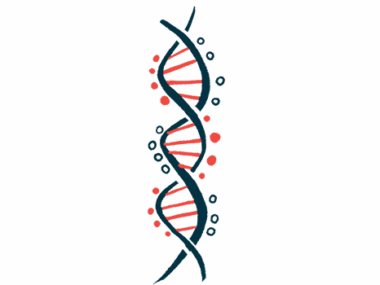New form of EDS identified by mutation in THBS2 gene
Disease-causing variant seen in sisters and confirmed by researchers using mice
Written by |

A mutation in the gene THBS2 cause a newly defined form of Ehlers-Danlos syndrome (EDS) that’s characterized by unusual flexibility as well as prolonged bleeding and blood vessel abnormalities, a new study reports.
The study, “Heterozygous THBS2 pathogenic variant causes Ehlers–Danlos syndrome with prominent vascular features in humans and mice,” was published in the European Journal of Human Genetics.
EDS refers to a group of connective tissue disorders that are typically characterized by symptoms including an abnormal range of joint motion and fragile skin. More than a dozen identified types of EDS exist, however, each with different causes and typical manifestations.
Better understanding a mutation
The patient at the center of this study is a woman in her late 20s of Ashkenazi Jewish ancestry who sought medical attention for a history of frequent joint dislocations, tendon rupture, easy bruising, and prolonged bleeding when injured. She also reported fatigue in her legs after exercising.
The patient’s older sister and their mother reported similar symptoms. Imaging studies showed blood vessel abnormalities: the younger sister and her mother both had unusual pooling of blood in veins in the lower legs; the mother also had abnormalities in a heart valve. Of note, the mother’s father, who had a history of aneurysms (bulging or swollen blood vessels) while alive, had died of a blood vessel rupture.
The three women underwent EDS-specific genetic testing, but analyses of more than a dozen genes linked to EDS showed no noteworthy findings. A more widespread analysis identified 43 genetic variants that were in both sisters. Most of these were common in people of Ashkenazi Jewish ancestry and were ruled out, and a few others were ruled out by genetic testing of the extended family.
The researchers then zeroed in on a mutation in the THBS2 gene that was found in both sisters, but not their unaffected relatives or in databases of genetic samples from more than 7,000 Ashkenazi Jews.
Everyone inherits two copies of the THBS2 gene, one from each biological parent. In the sisters, just one copy of the gene carried a mutation (called p.Cys896Arg), indicating that this form of EDS is inherited in an autosomal dominant pattern where one mutated copy is sufficient to cause disease.
“Our findings demonstrate that the THBS2 p.Cys896Arg variant … has a dominant effect,” the researchers wrote.
To confirm that this mutation was disease-causing, the researchers generated mice carrying the same mutation in the mouse version of the THBS2 gene. These mice demonstrated excessive flexibility — in fact, the researchers said they were able to tie the mice’s tails into knots without causing the animals any notable distress. The mice also bled excessively when injured.
Upon lab evaluation of the mice’s tissue, the researchers noted that collagen fibers were disorganized. Collagen is the main protein that gives body tissue its structural integrity, and collagen abnormalities are a defining feature of EDS.
Altogether, these data define a new form of EDS caused by a mutation in the THBS2 gene. The scientists are working on further studies to understand the biological mechanisms of how THBS2 mutations lead to connective tissue abnormalities.





